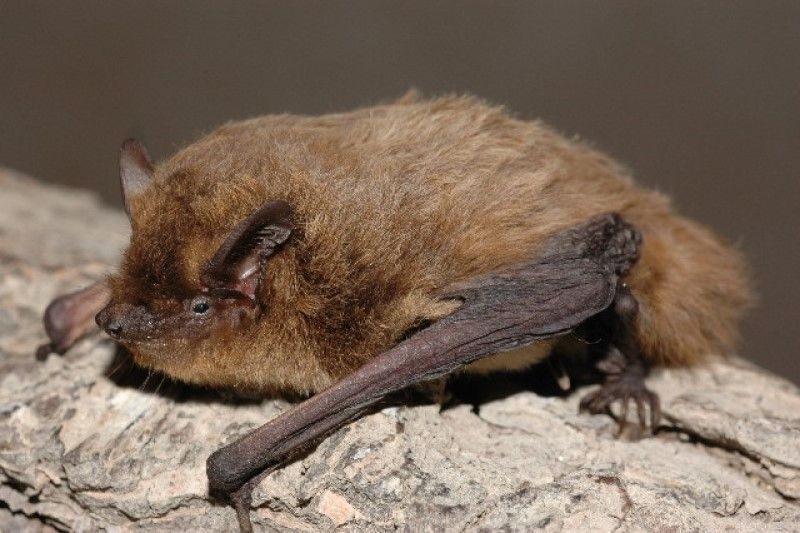Nathusius’ pipistrelle bat

Status
Native and rare
Population
Unknown
Scientific name
Pipistrellus nathusii
Like common and soprano pipistrelles, a Nathusius’ pipistrelle could fit into a matchbox, with its wings folded. It is slightly larger than the other pipistrelles, with broader, longer wings. It has shaggy, reddish brown fur and a paler underneath, with a dark face and ears. Its flight is slightly faster – but less manoeuvrable – than that of common and soprano pipistrelles, and insect prey are caught in the air. Nathusius’ pipistrelle is a migratory species and in mainland Europe, individuals fly many hundreds of kilometres in late autumn and spring. A small breeding British population is resident all year, probably topped-up by winter migrants from the Continent.
Wingspan: 22 – 25cm
Weight: 6 – 15g
Lifespan: Up to 16 years
Reproduction
Mating occurs between early September and November. Maternity roosts of up to several hundred females form during April and May (typically in wall cavities), and one or two pups are born to each female in June or July. The young are able to fly after about four weeks and are weaned by six weeks.
Diet
Midges, mosquitoes, mayflies, lacewings and small moths.
Summer roosts
Tree hollows, spaces in buildings and cracks in walls.
Winter roosts
In Europe, crevices and rock fissures, cracks in walls, caves and tree holes.
Habitat
Deciduous and mixed woodland, occasionally farmland; nearly always near water (hunting over lakes and rivers.
Ultrasound
Similar to common and soprano pipistrelles but their peak frequency is lower, at about 39 kHz.
Status and conservation
GB Red List: Near Threatened (NT); Vulnerable (VU) in Scotland and Wales.
Population size and distribution
No population estimates exist for Great Britain. The population trend is unknown. It is likely that numbers in Great Britain increase in late winter and decrease at the start of spring due to migration. They are widely distributed throughout Britain, but rare.
Did you know?
Nathusius’ pipistrelle was first recorded in Britain in 1940, as a vagrant, but its status was upgraded to winter visiting migrant as records accumulated. In 1997, a breeding roost was found and four maternity roosts are now known in the UK.
